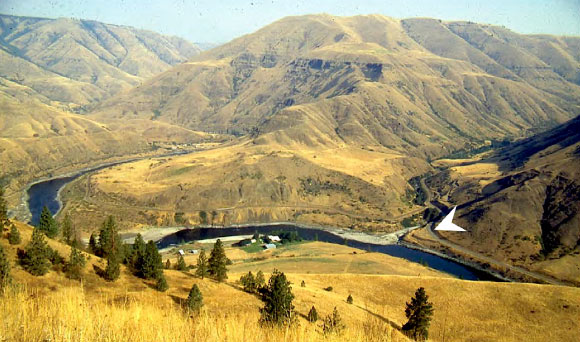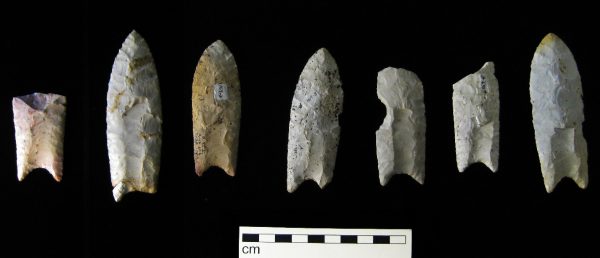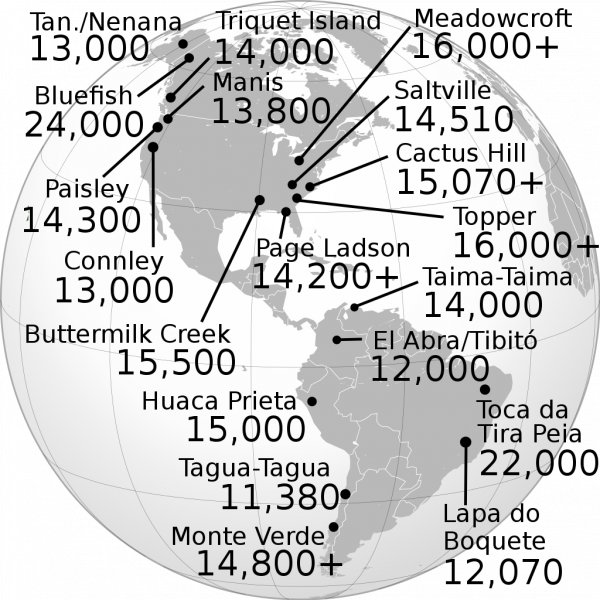Discovered 16,000-Year-Old Stone Artifacts in Idaho
The migration and population of North America may not be as we have long been taught. That’s according to new scientific discoveries being uncovered in an archeological dig at Cooper’s Ferry in Idaho.
Finding some simple tools could change everything many people believe about human history in North America. For many years, Discover Magazine explains, scientists believed that the first people came to North America around 13,000 years ago.
Since then, older artifacts have increased the time to around 15,000 or perhaps longer. According to a story in National Geographic, scientists in Cooper’s Ferry are finding even more artifacts leading to new speculations.
The tools, consisting of stemmed points like knives, blades, and cutting tools, found in the northwest corner of Idaho are believed to be 1,000 years or more older than those found in 2007 in Sonora, Mexico.
That has scientists reconfiguring their earlier hypothesis. Previous finds of Clovis stone tools were the foundation for scientists believing people walked to North America from Asia by crossing land that adjoined Siberia and Alaska.

The belief was the land became exposed as the globe warmed from the last Ice Age, creating a bridge for people to cross over and enter from the north. They then migrated downward, according to the theory.
Researchers at the Cooper’s Ferry archaeological site in western Idaho found evidence they say is linked to human activity dating back as far as 16,560 years ago. https://t.co/xnw5MUhoR5
— steve kamp (@KampSteve) August 30, 2019
The Clovis tools are approximately 13,000 years old; however, the pointed spears found in Cooper’s Ferry have been pinpointed to between 15,000 and 16,000 years old. The Cooper’s Ferry artifacts are now the oldest evidence undergoing radiocarbon dating showing that humans were in North America.
The idea that people migrated to North American some two millenia prior to earlier speculation changes the basis of the theory because the ice hadn’t melted to expose northern land at that time. That means people had to migrate through another route.

Scientists are now giving more credence to another theory that once got little attention.
This theory is that those coming to North America came by what is called the “kelp highway”. Described on OPB, under this theory, people from Asia went from island to island along the seaway corridor, living on shores and sheltered bays where they could find plenty of food. The people then migrated to the west coast and moved inward.
The connection between Asia and Idaho are the pointed tools. Such tools are abundant along Asia’s coastline, but none were found in North America until the trove was discovered at Cooper’s Ferry.
There are many similar sites discovered in both North and South America. According to National Geographic, the problem, in the opinion of archeologist and University of Washington emeritus professor Donald Grayson, is the majority of those sites weren’t dated accurately.
Sites include the Gault and Friedkin sites in Texas, the Monte Verde site in Chile, and the Paisley Caves site in Oregon. All are believed to be between 14,000 and 15,500 years old.
Even though Grayson is conservative in attributing much to any of these sites, the archeologist said he would put into consideration on Idaho Cooper’s Ferry site because it has proper dating.

Archeologists believe the West Coast was settled by these migrating people, according to published CNN reports. The problem with identifying possible settlements that would prove this idea true is that sea levels have shifted since then and covered any communities along the West Coast.
Cooper’s Ferry isn’t near an ocean, but it is at the intersection of two large rivers, the Snake and Salmon Rivers, which flow to the Columbia River. People following food south from the West Coast would follow the Columbia to Cooper’s Ferry.
The area was filled with fish and other wildlife, so it would make sense to settle there.
There could be more settlement sites at the higher levels of the river’s tributaries, but there are no plans yet to excavate those areas.
Another Article From Us: Thawing Permafrost Could See Anthrax & Prehistoric Diseases Return
Cooper’s Ferry has been of interest since the 1960s with a test excavation beginning in 1997. Serious digging at the site began in 2009 and continued through 2018.





